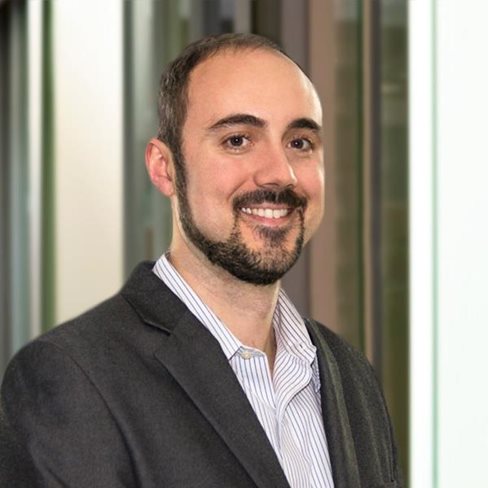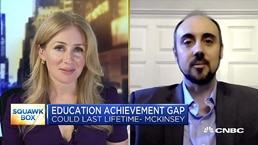The damage COVID-19 is inflicting on student learning in the United States could last a lifetime. One of our latest education reports finds that continued school shutdowns could exacerbate existing achievement gaps, especially among Black and Hispanic students, and create overall learning losses that are likely too great to re-gain in the next academic year.
McKinsey partner Jimmy Sarakatsannis is a co-author of the report. He spoke with us about the research, how his background as a public school teacher informs his work today, and the potential solutions he's excited about most.
Tell us about your background in education before joining the firm.

I taught middle school science at a public school in Washington D.C. Teaching was extraordinarily rewarding—and extraordinarily difficult. I’ve always seen education as one of the most powerful levers we have to create social mobility for people, in particular for students who experience poverty and other socioeconomic challenges.
One of the biggest things I learned as a teacher, however, is that the challenges students face go well beyond learning. For students experiencing poverty especially the margin for error in their lives is so small. A $50 speeding ticket or medical bill can have enough of an impact on a family to knock a student off their trajectory for a month or more.
Why did you leave teaching for McKinsey?
I came to McKinsey thinking I should get some management and organizational experience, and potentially return to public schools. But once I joined the firm, I realized how much of a positive difference I could make addressing the challenges of public education through an entirely different lens.
In June 2008, the year before I joined the firm, I was teaching about 30 students in a classroom overlooking the U.S. Capitol. A year later, I was presenting to a major stakeholder on our national K-12 strategy, about a mile from my old classroom. I miss the one-on-one interaction with individual students, but I’m also grateful that at McKinsey my work can continue to help improve the lives of students.
How does your experience in public schools inform your work today?
Not a day goes by that I don’t think about either individual students or my time in the classroom. It’s grounding because it reminds me that all of the policy and strategy decisions we help clients make end up manifesting in interactions between teachers and students, and what students do every day.
When I work now, I remember that. The work we do ends up trickling down to affect students and teachers individually. I can see those connections now and know what it feels like to be in a teacher’s shoes—how they interact with students—and it informs what I do daily.

Our new research finds that continued school shutdowns will magnify existing gaps in learning for Black and Hispanic students—and also lead more of them to drop out. Among the bright spots we outline, what are some efforts you’re excited about?
We haven’t solved this by any stretch—our achievement gaps have persisted for decades. So no one thing is going to move the needle here.
But one thing we could do, which a few systems are doing, is to recognize that while not all kids will return for in-person learning in schools this year, we can prioritize getting those students with fewer opportunities generally—students of color, or students experiencing poverty—back into classrooms first.
We also have an opportunity to disaggregate the role of the teacher and ensure that teachers are really focusing their time on activities that only skilled teachers can do, and allowing other adults to do the other tasks. This can magnify the impact and time teachers can have, particularly with students who need it most.
Finally, we simply need to get more resources for students who are further behind—we need to ensure they have access to devices and connectivity, and we need to find ways to get them more instructional time throughout the year, and more one-on-one time from tutors to help them catch up.
To that point, what role does child care play in education, particularly for the most vulnerable learners?
There are two elements here. First, our previous research has found that significant learning gaps are created by the time kids go to kindergarten, which is tied to the opportunities children have to develop in years zero to five. And those gaps typically remain for the rest of their school careers and lives. So yes, we absolutely have to make sure that the youngest children have some sort of developmental support before kindergarten.
And the second is just the broader challenge for all parents. If school schedules shift as a way to cope with the pandemic, for instance, parents may need to be home during times that don’t mesh with their work schedules. This isn’t easy for anyone, but I really worry about parents who can’t afford to lose a shift at work to stay home with their kids. I go back to that margin of error I talked about. It’s stressful for everyone; it’s existential for some.
You’re the father of two sons, one of whom just completed kindergarten through remote learning. What has this personal experience as a parent to a remote learner been like?
We’re very fortunate. I think about how my son has grown a lot from the time he’s spent with learning software, working with me and his mom, and through his video check-ins with his teachers. Now, contrast that against if neither my wife nor I could spend time with him during the day, or have the technology that lets him work with his classmates. You can imagine how easily a child might experience a trajectory like those we outlined in the report.